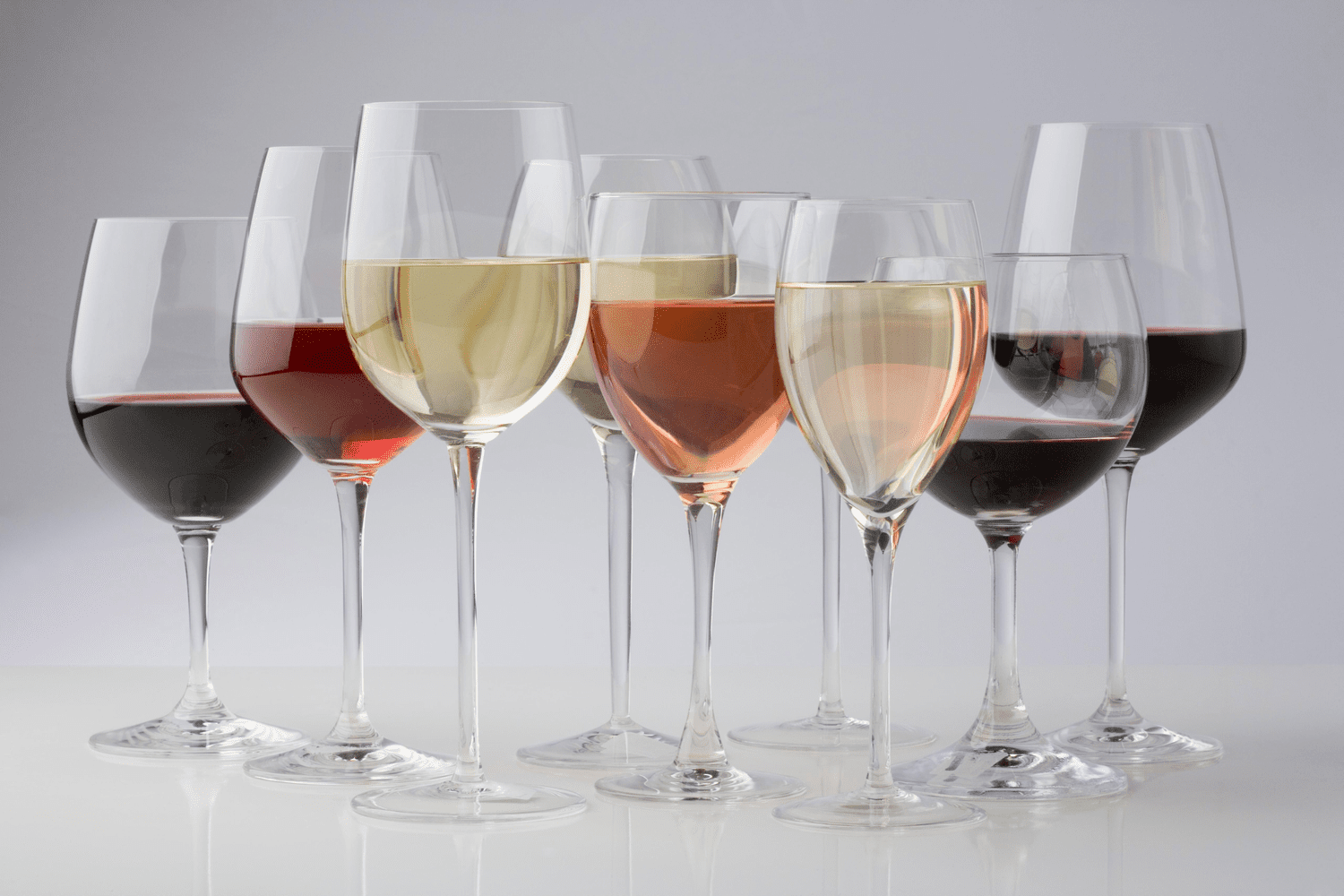6 Different Goblets Must Be Known

First of all, why do we choose wine glasses when drinking wine? Some may say it's for aesthetics, and that answer is certainly not wrong. However, there exist additional significant rationales for this practice: firstly, it helps prevent fingerprints on the glass surface, which might interfere with observing the wine's color; secondly, given wine's high sensitivity to temperature variations, employing wine glasses permits one to grasp the stem, thus shielding the wine from the heat of one's hand and maintaining its intended temperature.
When you taste a delicious wine, if you don't have the right wine glass, the wine's charm will be greatly diminished. The right wine glass can guide the wine to the most suitable taste receptors on your tongue through its appropriate shape. For example, a Bordeaux glass can direct the wine straight to the middle to back of the tongue, emphasizing the bitterness of tannins while highlighting the balance of sweetness and acidity.
Experts in wine service acknowledge that various types of wine benefit from specific glassware designed to accentuate their unique qualities and flavors. In general, wine glasses can be categorized into three primary styles: those with larger bowls for red wines, glasses with slightly smaller bowls for white wines, and flute-shaped glasses tailored for sparkling wines.
Following the principle of using different glasses for different styles of wine, these types can be roughly categorized into the following:
1.Bordeaux glass
The Bordeaux glass is suitable for most French Bordeaux red wines. Because Bordeaux red wines have high acidity and strong tannins, they require a tulip-shaped glass with a long bowl and curved sides. This shape of the glass allows for effective control of the direction of wine dispersion when it enters the mouth. Additionally, the wider rim of the glass helps us perceive the evolving aroma of Bordeaux wine more acutely.
2.Burgundy glass
The Burgundy glass is suitable for tasting rich and fruity Burgundy red wines. Due to its bulbous bowl shape, it effectively guides the wine to spread across the front of the tongue, allowing for a full integration of fruitiness and acidity. The inwardly tapered rim of the glass helps concentrate the potential aroma of Burgundy red wine.
3.Champagne glass
The Champagne glass is suitable for all sparkling wines. Its slender and elongated shape provides ample room for the bubbles to rise. Additionally, standard Champagne glasses have a pointed base that enhances the effervescence of the bubbles. Ice wines can also be tasted using Champagne glasses.
4.Dessert wine glass
The smaller and shorter bowl of dessert wine glasses is ideal for pairing with sweet wines such as sweet whites, port wine, and sherry. The flared opening of the upturned glass concentrates the wine's flavor at the tip of the tongue, allowing the fruity sweetness to fully unfold.
5.White wine cups such as Sauvignon Blanc Cup, Chardonnay Cup and Riesling Cup
Because white wines are best enjoyed at cooler temperatures, numerous white wine glasses are crafted with smaller dimensions to aid in preserving the wine's temperature and avoiding rapid warming. Opting for varying shapes of white wine glasses tailored to specific grape varieties can elevate and enrich the experience of savoring the wine.Sauvignon Blanc is a refreshing and crisp wine, so its glass has a smaller opening and bowl, which helps concentrate the aroma and softens the acidity.
Chardonnay glasses have a slightly larger opening and bowl to match their fuller body. Riesling glasses have a taller bowl with a slightly flared rim, which helps slow down the wine's entry into the mouth and softens the acidity.
6.ISO Glass
The International Standards Organization (ISO) glass, often referred to as an ISO tasting glass, has a small opening and a large bowl with a tulip-like shape. It has a generous capacity, allowing the wine to breathe freely in the glass. The slightly narrowed rim design prevents the wine from splashing out when swirled and helps concentrate the wine's aroma at the rim for better aroma appreciation.
Designed by the French INAO (Institut National de l'Origine et de la Qualité) in 1974, the ISO glass is widely used in international wine tasting events as an evaluation glass. It is considered an all-purpose wine glass that does not emphasize the specific characteristics of a wine but reflects its true nature.
People who pay close attention to taste and details often insist on using specialized glasses for different wine varietals. However, for those who prefer a more relaxed approach, having a standard tulip-shaped glass like the ISO glass can suffice as a versatile option. The simplest choice is to purchase an ISO tasting glass.
When selecting a versatile wine glass, consider these common basic principles:
- Colorless and transparent glass to allow for color observation.
- A moderately-sized bowl with a slightly tapered rim.
- A thin and lightweight material for the glass.
For beginners, starting with a versatile glass is a good approach. As your comprehension of the distinct attributes of various wines deepens, you can venture into the realm of employing specialized glassware, enriching your ability to savor the delightful nuances they contribute to the wine-tasting journey.

